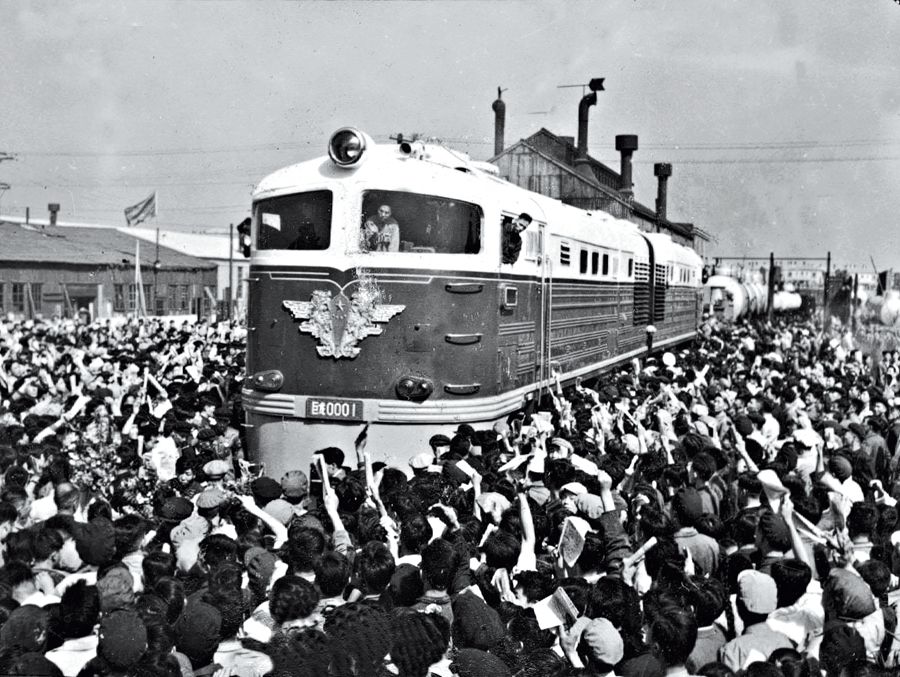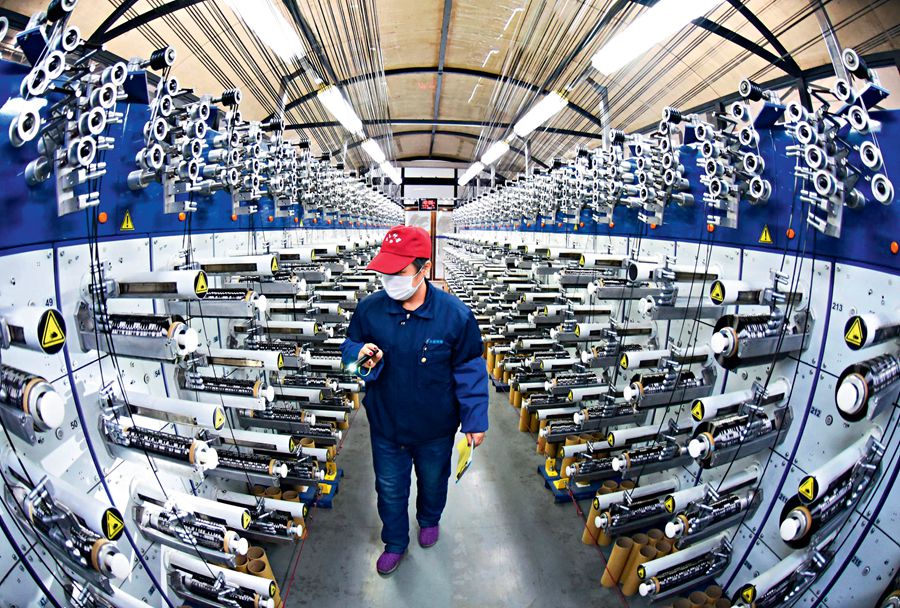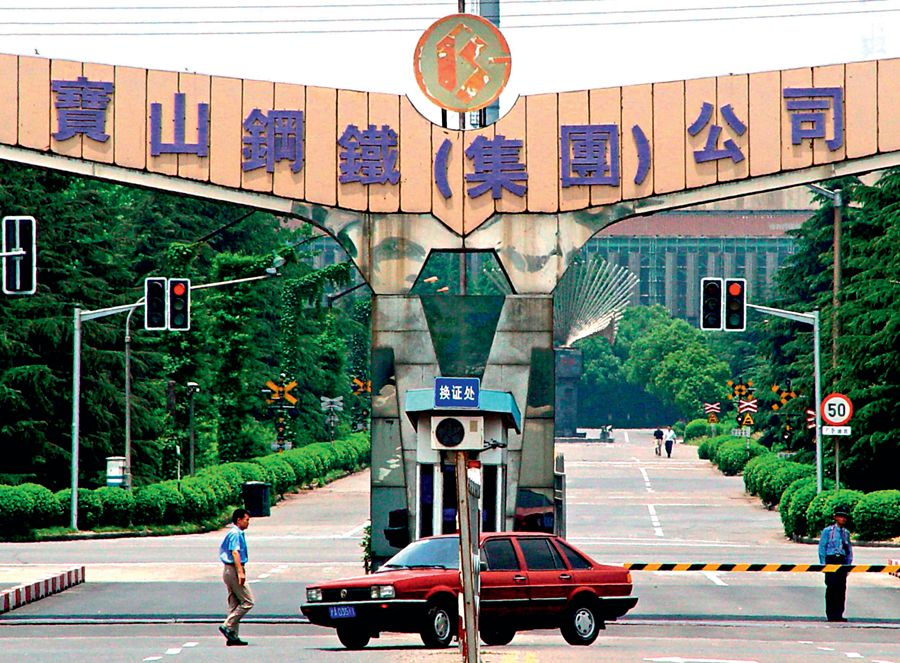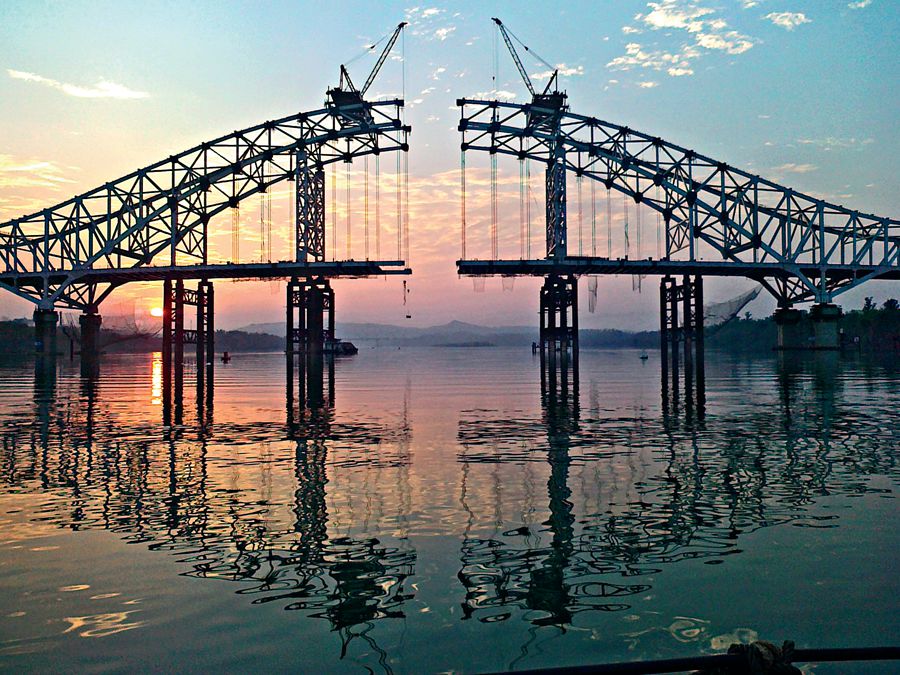AS early as in the 1940s, Mao Zedong began to emphasize the importance of developing industries, pointing out that industrialization should take top priority for China after the fall of imperialism, feudalism, and bureaucrat-capitalism. He envisioned the nascent People’s Republic of China (PRC) transformed from a country with an underdeveloped agriculture based economy into an advanced industrial country with an independent and complete industrial system.
Laying the Groundwork: 1949-1972
China had been void of any modern industry till 1949, when the PRC was founded. In the late Qing Dynasty (1644-1911), China built its first railway, power plant, and match factory, and the Jiangnan Shipyard, followed by other industries during the Republic of China period (1912-1949). However, imported equipment at the time was operated by foreign technicians. Industrialization and industrial system were nonexistent in China.
March 2019: The carbon fiber production line of a factory in the Economic and Technological Development Zone of Lianyungang, Jiangsu Province.
In the eight–year war against Japanese aggression (1937-1945) and the following three-year war of liberation, most of the few factories that had been in operation in the country were destroyed. By the time the PRC was founded, domestic industry consisted of no more than a handful of dilapidated, outdated factories.
China began industrialization in the 1950s. During this period, it received 6.6 billion rubles (US $1.65 billion) in assistance from the Soviet Union, exceeding the amount of U.S. aid to Germany under the Marshall Plan (US $1.45 billion), and 3.08 billion rubles (US $770 million) worth of technical equipment from East European countries. With their support, China launched an industrialization unlike anything it had ever seen before, launching 156 large industrial projects (150 of which were completed) in sectors of heavy industry such as energy, metallurgy, machinery, chemistry, and national defense. The influx of foreign capital also sped up the transition from private ownership to state ownership of the Chinese economy, reaching its goal 10 years ahead of schedule. The foreign assistance however did not come free, and was repaid in agricultural products and industrial raw materials.

September 1958: A 4,000-hp diesel locomotive manufactured by Dalian Locomotive and Rolling Stock Factory.
Starting in the mid-1950s, China concentrated its resources on industrialization through the collectivization of its agricultural section, which at the time contributed as much as 30 percent of the annual national income by average to fund industrial development.
The contributions made by the agricultural sector soared to a staggering level during the three years from 1959 to 1961 when China was suffering the dual blow of natural disasters and pressure to repay Soviet Union debts. The rate was 43.8 percent in 1959 and 39.6 percent in 1960 compared with 24.9 percent in 1957 and 33.9 percent in 1958. As a result, farmers had to cut back on grains for their own consumption in order to contribute more to the state-funded industrial development. The collectivization of agriculture in the 1950s opened up the rural market for heavy industrial products made in cities. At the same time, the “scissors differential” between higher prices of industrial products and lower prices of agricultural products generated capital for industrialization in cities.
During the first three decades of the PRC, Chinese people tightened their belts to develop the industrial sector. According to a 1978 study by Prof. Yan Ruizhen of Renmin University of China, for the first 20 years after 1949, the state extracted RMB 700-800 billion from the agricultural sector, while the fixed assets of the state-owned industrial sector were RMB 900 billion prior to 1978. The study of another professor of the university, Kong Xiangzhi, found that an exorbitant amount of RMB 17.3 trillion was channeled from the countryside to cities over the first 60 years of the PRC.
Being greatly supported by the agricultural production, Chinese industry underwent strong growth from 1950 to 1977, at the rate of 11.2 percent, second only to Japan globally and far above that of the U.S., Soviet Union, Germany, and the U.K. Despite the glaring imbalance between heavy industry, light industry, and agriculture, and anemic domestic consumption, China had preliminarily accomplished primitive accumulation of capital by the early 1970s.
During these two decades, a number of industrial projects were completed, a national industrial base centered on Anshan Steel emerged in northeast China, the old industrial bases in the coastal area were rejuvenated, and new ones were built in north and northeast China. The country had now built an independent, complete industrial system and a mature sci-tech system, successfully tested its first atomic bomb and H-bomb, and launched its first satellite. This progress brought China closer to industrialization, and laid foundation for economic development in the following decades.
July 2002: Baosteel Group ranks the fourth among 13 world-class iron and steel producers.
Opening to the Outside World: 1972-1978
During the decade of 1969-1979, China upheld the fiscal policy of not borrowing any money from other countries or its own people. It was not until December 1979 that it took out its first foreign loan. For the 1970s, the development of Chinese industry was entirely funded by domestic funds. With a decent fiscal reserve, a largely well-structured national economy, and industries of all categories in a balanced distribution, China’s GDP underwent rapid growth during the 1970s, ranking it the eighth and ninth fastest in the world.
When Premier Zhou Enlai delivered the government work report at the National People’s Congress on January 13, 1975, he declared, “In contrast to the economic upheavals and inflation in the capitalist world, China has maintained a fiscal balance, and owes no foreign or domestic debts. Prices are stable, and people’s livelihoods are steadily improving. Socialist construction is going from strength to strength.”
In October 1971, China’s status as a permanent member of the United Nations Security Council was restored. In 1972, the U.S. President Nixon visited China. Over the following months, more than 40 countries established diplomatic ties with China. The long-existing economic and technical blockade against China by the West came down, paving the way for China’s opening up to the outside world.
During the five years after 1973, China imported US $5.1 billion worth of complete sets of equipment. This marked the beginning of the second wave of technical imports by China after the Soviet aid in the 1950s. With both imported and home-produced equipment, China launched 26 large-scale industrial projects with a total investment of RMB 20 billion, all of which began operating by 1982 and bolstered China’s economic growth in the 1980s.
In the period 1949-1978, China increased its GDP by an average of 7.3 percent year on year, and established a complete industrial system and national economic system. By 1980, the size of its industrial sector had exceeded that of the U.K. and France, the world’s two largest industrial powers, and was close to that of the world’s No.3 largest industrial giant, Germany. China’s gross industrial output value soared and soon became the world’s third largest in the mid-1980s.
Adjusting the Industrial Structure: 1978-2000
China introduced a raft of economic reforms after the Third Plenary Session of the Eleventh CPC Central Committee in 1978. Based on the industrialization progress before, China began to restructure the industrial sector. It shifted the priority from heavy industry to light industry, and adopted the strategy aimed at improving people’s livelihoods, seeking an overall development of industry, opening up to the outside world, and promoting the development of diverse economic sectors.
A railway bridge built by China Railway Group Limited.
To stimulate the development of light industry, China began to give preference in 1979 to the sector in supply of raw materials, fuel, and electricity, innovation and renovation measures, infrastructures construction, bank loan application, use of foreign exchange, importing of technologies, and transportation. These measures led to structural changes in the Chinese industrial system.
The 1990s saw a surge of growth in China’s heavy chemical industry and processing industry. While light industry remained the focus, upgrading consumer spending, accelerating urbanization, and increasing investment in transportation and infrastructure boosted the development of heavy industry. To break the bottleneck in the fields of energy, transport, and raw materials, the heavy chemical industry took off the ground in 1993. The next year witnessed China’s iron and steel output take the lead in production around the world, with crude steel production accounting for half of the global total.
In 1997, a fundamental shift occurred in Chinese economic development. Amid the economic soft landing and the Asian financial crisis, China adopted a proactive fiscal policy, and started extensive industrial restructuring. After people’s needs for food, clothing, and home appliances were met, the demand for durable consumer goods spiked. It had found freedom from the “shortage economy,” and the changing structure of demand spurred modifications and upgrading of the industrial structure, which led to a resurgence of the heavy industry and processing industry.
By then, after 20-plus years of rapid development, China’s industrialization had entered a middle phase where heavy and light industries supported each other, formed a balanced structure, and grew in synergy.
After the readjustment from 1989 to 1991, China’s economy was galvanized with new reforms following Deng Xiaoping’s inspection tour of south China. Market economy replaced planned economy and became the basic state policy. The expansion of modern corporate systems further accelerated the industrialization of cities, and the boom of capital market added fuel to the take-off of China’s economy.
Globalization of Manufacturing: 2000-Now
China’s entry into the WTO in 2001 ushered the country into the globalization era. For the previous two decades, China’s industrialization was largely based on the domestic market. Its admission to the WTO brought about the second revolution in China’s social productivity. Driven by exports, investment, and domestic consumption, China grew into an international manufacturing power.
Since the year 2000, most of the world’s Top 500 companies have set up operations in China, grabbing market shares, monopolizing core technology, and attracting a great number of researchers with high salaries. Economic globalization has brought into China advanced corporate management know-how and business models from which local companies can learn.
With the influx of both foreign and domestic investment, the Yangtze River Delta, Pearl River Delta, and Bohai Sea region have grown into international manufacturing hubs, holding the No.1 title in over 100 manufacturing sectors. The Made in China tag is now found in stores all over the world.
The large quantity of export of manufactured goods has created great wealth for China. Bolstered by sustained increases in foreign investment and trade surpluses, China’s foreign exchange reserves soared up to US $3.18 trillion in 2011 from US $165.6 billion in 2000, and peaked at US $3.84 trillion in 2014. In 2015, it dipped to US $3.33 trillion.
By adopting a fitting development model, China came to an unprecedented economic boom prior to the 2008 financial crisis. After that, it shifted growth gears to high-quality, sustainable development by slowing down growth and restructuring, and upgrading its economy. Accompanying the challenges it has faced under the ongoing supply-side structural reform are new opportunities for Chinese companies.
CAI QIBI is an official with the municipal government of Sanming, Fujian Province.



